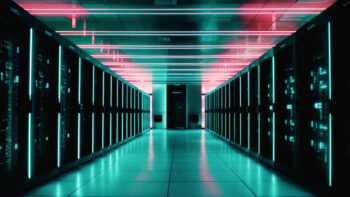The PC market has been waiting for such a strong boost for years. We have found it, or at least that is what the major players claim. The terms ‘AI PC‘ and ‘NPU’ are being conjugated in all cases and the marketing departments of the giants are promising a new era of productivity. Analysts seem to confirm this trend. Gartner estimates that AI PC shipments will reach 31% of all shipments as early as 2025, a massive jump from just 15% in 2024. Manufacturers are rubbing their hands together, but IT leaders are scratching their heads as they look at their budgets.
Indeed, this AI ‘gold rush’ has a second, more prosaic background. It is a ticking time bomb: the end of support for Windows 10 in October 2025. Millions of companies are facing massive hardware replacement anyway. So the question becomes a burning one: is the AI PC wave a true revolution on the scale of the advent of the internet, or an ingeniously executed marketing manoeuvre to sell much more expensive hardware to companies that need to go shopping anyway?
The heart and marketing lure of the new AI computer is the NPU (Neural Processing Unit), or specialised neural processing chip. This is the new ‘brain’ in the machine, which functions alongside the well-known CPU and GPU. Its task is one: to handle artificial intelligence tasks locally, directly on the device. The promise the manufacturers make to us is based on several pillars. The most important of these is security and privacy. The processing of sensitive data, be it financial analyses, strategic plans or code snippets, takes place on the laptop, without sending it to an external cloud. Less risk of leakage is a real value.
Another argument is speed and responsiveness. When AI works locally, we are not limited by network latency. This means instant transcription of a meeting in real time, immediate AI prompts in apps or seamless video analysis without buffering. Then there is the energy efficiency. The NPU consumes significantly less power than the CPU or GPU for AI tasks, which in the era of hybrid working translates directly into longer battery life. Finally, there is the promise of deep personalisation, where an AI model running locally learns the specifics of the user, offering much more tailored assistance than a generic model in the cloud.
The promises sound excellent. The problem is that when we buy an AI PC today, we are largely buying potential, not a finished solution. The clash with reality can be painful for the wallet. Let’s be honest: most of the generative AI applications we use today run 100% in the cloud. ChatGPT, Claude, Midjourney or even the basic Microsoft Copilot functions do all the hard work on powerful servers. All you need to run them is a decent browser and a stable connection.
The arguments against a mass, no-frills replacement of hardware with AI PCs are tough. Firstly, there is the cost. These machines are more expensive, and the ROI of the purchase for an employee who mainly uses Office is close to zero. Secondly, we are seeing the immaturity of the ecosystem. Manufacturers have delivered the hardware, but software developers are just starting to learn how to use it. Business applications that realistically *require* NPUs are scarce. So we’re buying computing power ‘for spare’. Third and finally, for the overwhelming majority of office tasks, cloud computing is simply “good enough”.
We are at a classic tipping point. The IT leader’s response should be neither ‘we buy for all’ nor ‘we ignore the subject’. The answer should be: “we implement selectively”. Instead of succumbing to marketing pressure, IT departments should create an internal ‘needs matrix’ and identify the specific roles and departments that will be the first to experience real benefits from local AI processing.
Who is on the priority list? It will certainly be developers and IT teams, who can run local models to assist with coding or analyse logs without sending sensitive code outside the company. It will also be marketing and creative teams, for whom local AI will speed up graphics and video rendering while maintaining confidentiality over a new campaign. It’s also worth considering data analysts and financiers, processing huge, confidential data sets on their own laptops. Finally, and perhaps surprisingly, executives may be on the list. Not because of the need for computing power, but because of the guarantee of privacy when analysing strategic reports with the help of an AI assistant. For the rest of the workforce, a solid, modern laptop without an NPU will be absolutely sufficient in 2025.
AI PC is undoubtedly the future and the inevitable direction of personal computer evolution. However, the current market hype is an explosive mix of genuine innovation, gigantic marketing budgets and the perfect timing of the end of Windows 10 support. A wise IT strategy for the coming years is not a blind pursuit of every ‘buzzword’, but the art of selective investment.
The recommendation for business is simple. Don’t panic and replace your entire machine fleet. Instead, use the forced migration from Windows 10 as an ideal time for a pilot programme. It’s worth buying wisely: identify 10-15% of ‘power users’, equip them with AI PCs and let’s collect hard data on productivity gains, realistically counting ROI. For the remaining 85% of employees, the safe and sensible choice remains robust, modern hardware. When the next refresh cycle arrives in 2-3 years, the application ecosystem will have matured, AI PC prices will have come down and their purchase will no longer be a marketing promise but a standard business decision.












